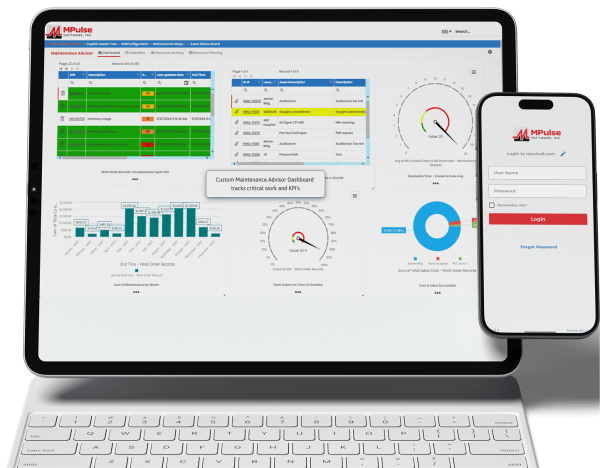Reducing breakdowns and emergency repairs directly impacts your team’s workdays.
But setting up a PM tracking routine might feel challenging if you’re facing a huge backlog of maintenance tasks or feeling the pinch of labor shortages and budget cuts.
But here’s where CMMS software can help.
Table of Contents
How Do I Get Started?
It’s important to start small with manageable goals. We recommend creating a list of your organization’s most important assets. Rank them by their impact on production and operations. Next, you can…
- Pick five of those assets.
- Enter scheduled maintenance tasks into your CMMS software, based on the manufacturer’s recommendations.
- Choose to schedule each task by time or meter. For example, you might want to schedule safety inspections or tasks for assets like HVAC systems based on time. However, it makes more sense to track miles, hours, or runtime with assets like vehicles or production equipment.
- If you choose to make a task meter-based, enter the anticipated usage and frequency interval.
- Include any important details that your technician needs to know, like checklists, links to manuals or websites, and parts and inventory.
Next, your CMMS software will generate a schedule of PM tasks, making it simpler to follow the manufacturer’s guidelines.
These schedules and inspections help spot issues before they occur. Additionally, they enable you to prioritize daily tasks for your teams, making sure the most important jobs get done, while the lower priority work doesn’t slip through the cracks.
What’s Next?
Next, choose five more assets. Continue until you’ve entered the scheduled maintenance tasks for every asset that you want to track.
Okay, Now What?
With your maintenance tasks scheduled, you now can collect data with every completed work order. Over time, this information can help you identify repeated issues with assets and give insight on ways to correct them.
Helpful Tips
When creating your PM schedules, help your team save time when they’re in the field or on the production floor by providing key details for each task like…
- Manufacturer or vendor’s name, website, and contact details
- Location of asset
- Tasklists
- Documentation, including manuals and warranty details
- Inventory and parts information and location
Benefits of PM Tracking
Why bother setting up a PM tracking routine? It helps prevent the need for more costly repairs. Benefits include…
- Automated PM tasks schedules that make it simpler to follow the manufacturer’s guideline
- Reduced emergency maintenance issues and unexpected production stoppages
- Lower overtime costs for emergency repairs and production losses
- Decrease in more serious problems and more expensive maintenance that arise as a result of neglect
- Established schedules that ensure equipment is properly calibrated and lubricated
- Elimination of lost information between shifts, reducing confusion and errors
- Automated schedules for both employees and contract workers
- Improved equipment and asset reliability
- Streamlined compliance reporting
Find out how MPulse Software can help you create a preventive maintenance program. Leave a comment or contact us.





